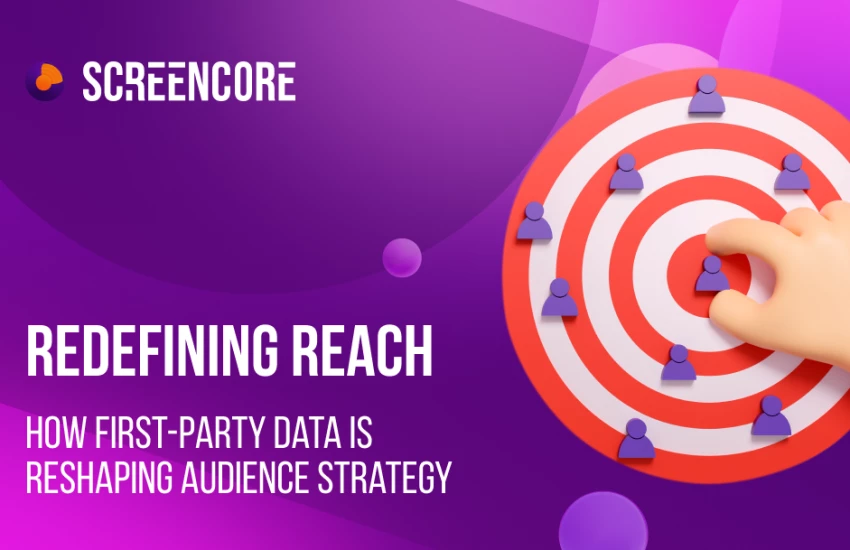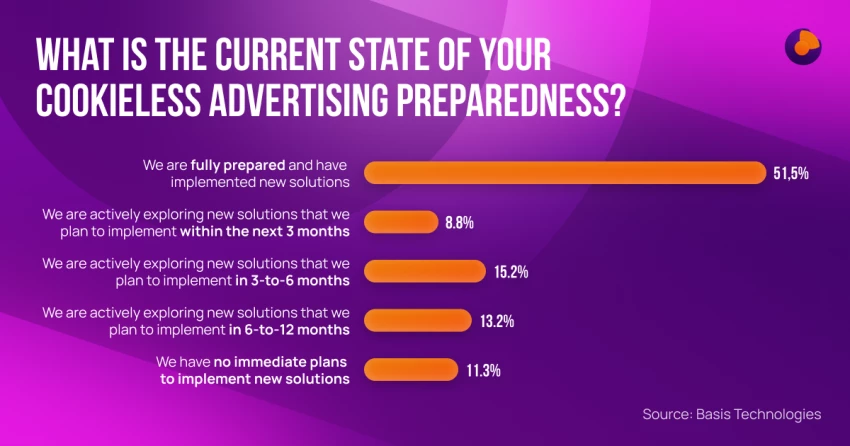Redefining Reach: How First-Party Data is Reshaping Audience Strategy

Сonnecting with the right audience is a key principle for advertisers. However, as privacy regulations tighten and third-party tracking declines, reaching these audiences has become more challenging. This shift brings new focus to the concept of the "addressable universe".
The "addressable universe" refers to the total pool of individuals or households that brands or publishers can reach and target with personalized advertising based on identifiable data. This universe includes users whose data is accessible through various identifiers, like cookies, login data, or other forms of consented tracking, allowing advertisers to tailor messages and measure the impact of their campaigns more accurately.
Signal Loss and Its Impact on Publishers
Signal loss is more than just a buzzword. Signal loss refers to the decline in accessible, identifiable user data in digital advertising, primarily driven by increasing privacy regulations and the industry’s reduced reliance on third-party data. As cookies, device IDs, and other third-party identifiers are phased out or restricted, advertisers and publishers lose valuable data signals that once allowed them to track, target, and understand audiences. This loss makes it more challenging to deliver personalized content, measure campaign effectiveness, and optimize ad strategies effectively, prompting a shift toward first-party data solutions to bridge these gaps.

In 2024, signal loss is a pressing issue for all advertisers. According to Basis Technologies survey, 51% of marketers and advertisers feel their organization is fully prepared to succeed in a cookieless world. However, that leaves another 49% who don’t feel fully prepared - some say they’ll be actively exploring new solutions for as long as the next 12 months, and others have no immediate plans to implement new solutions at all. But how they can prepare for the death of cookies?
One of the decisions that can help publishers to reclaim control over audience information and improve targeting is first-party data. By leveraging data collected directly from users through interactions on their own platforms - such as browsing behavior, subscriptions, and content preferences - publishers can build richer, privacy-compliant audience profiles. This shift not only strengthens audience understanding and engagement but also empowers publishers to deliver more relevant, personalized ad experiences.
First-party data allows publishers to create a sustainable, data-driven strategy that aligns with evolving privacy standards while maintaining the ability to target effectively and optimize ad revenue.
First-Party Data and Publishers
Unlike third-party data, which faces significant limitations due to privacy regulations, first-party data offers key advantages that make it a reliable foundation for audience strategies:
- accuracy and relevance;
- reliability;
- privacy compliance.
There several types of first party data, each providing unique insights:
- Behavioral data. This is information on user actions, such as page views, clicks, and content preferences. This data offers a window into user interests, helping publishers understand and anticipate user needs.
- Subscription and registration data - details users provide upon signing up, like name, email, demographics, and content preferences. This data helps create a more personalized experience while providing a basis for audience segmentation.
- Engagement data. This is a metric that reflects user interaction levels, such as time spent on site, click-through rates, and session duration. Engagement data provides indicators of user satisfaction and areas where content resonates most.
Building trust through data is an approach that builds trust. By respecting user privacy and collecting data transparently, publishers create a more open relationship with their audience, strengthening user trust and loyalty. Users are increasingly aware of data privacy concerns, and prioritizing first party data helps publishers address these concerns directly. This emphasis on privacy, coupled with personalized, valuable content, can foster long-term loyalty, helping publishers maintain a strong, engaged audience base over time.
Strategies for Expanding the Addressable Universe with First-Party Data
To expand the addressable universe with first-party data, publishers can adopt several strategies to unlock the full potential of user insights while ensuring privacy and relevance:
1. Audience segmentation and personalization.
By leveraging detailed audience segmentation, publishers can tailor content and ad placements to resonate with distinct user groups, creating a highly personalized experience that fosters loyalty and engagement.
2. Cross-platform and cross-channel activation.
Expanding across platforms and channels allows for seamless, consistent interactions with audiences wherever they engage with the brand, maximizing reach and reinforcing brand recognition.
3. Predictive analytics and lookalike modeling.
Using predictive analytics to understand user behaviors and employing lookalike modeling to identify similar audiences enables publishers to broaden their reach beyond their current user base, expanding the addressable universe.
4. Privacy-safe data collaboration.
Collaborating with advertisers through privacy-safe environments, such as data clean rooms, allows publishers to share valuable insights without compromising user privacy. Partnering with other compliant publishers also enhances data diversity and audience reach.
5. User engagement and progressive profiling.
Building trust through engagement and progressive profiling - where information is gathered gradually - ensures high data quality without overwhelming users. Interactive tools, like quizzes and polls, enable publishers to gather direct insights in engaging ways that enrich their understanding of their audience.
6. Continuous testing and data optimization.
Constant testing and optimization are essential to refining these approaches. By experimenting with audience segments, content types, and placements, publishers can adapt quickly to what resonates best while ensuring that data remains current and accurate.
Conclusion
As the digital advertising landscape continues its development, first-party data has proven to be an essential resource for publishers striving to expand their addressable universe. With third-party data limitations tightening due to privacy regulations, first-party data enables publishers to maintain control over audience insights and deliver more relevant, personalized experiences.
Privacy standards evolve and the shift away from third-party tracking continues. That is why publishers who prioritize first-party data will find themselves better prepared to meet the demands of a privacy-first digital ecosystem. By investing in advanced data strategies, publishers can not only maintain but expand their audience reach, driving engagement and revenue in a sustainable, future-proof way. With first-party data at the core of their approach, publishers are positioned to redefine reach, deepen connections, and lead the way in a new era of digital advertising.
Key Takeaways
- First-party data offers publishers the accuracy, relevance, and privacy compliance needed to build sustainable audience strategies.
- Collecting data directly and transparently fosters trust with audiences, aligning with privacy expectations and nurturing long-term loyalty.
- Leveraging behavioral, subscription, and engagement data allows publishers to create meaningful, personalized interactions that improve user satisfaction and drive engagement.
- From cross-channel activation and predictive analytics to privacy-safe collaborations and continuous optimization, publishers can tap into various tactics to grow and refine their addressable universe.

